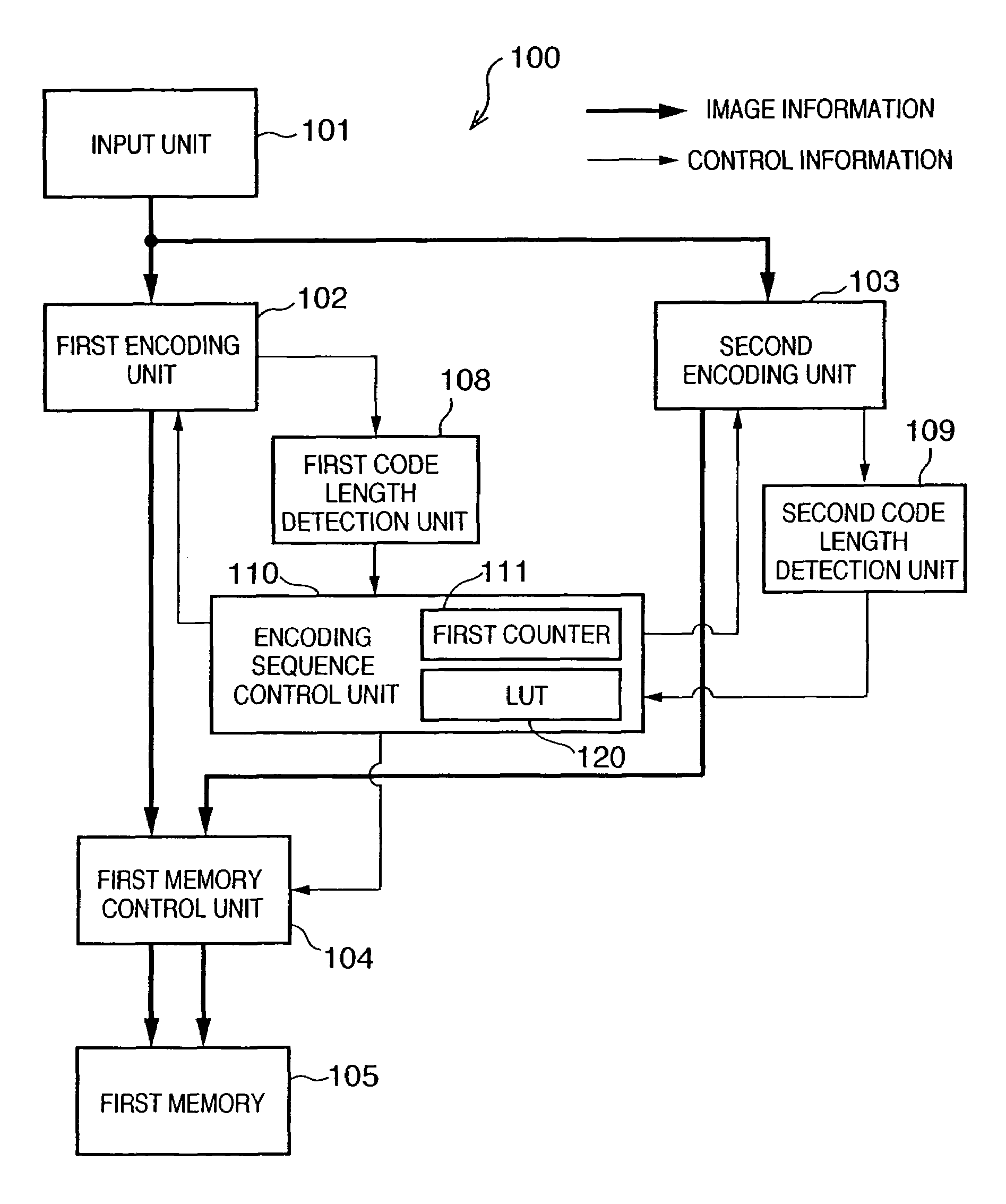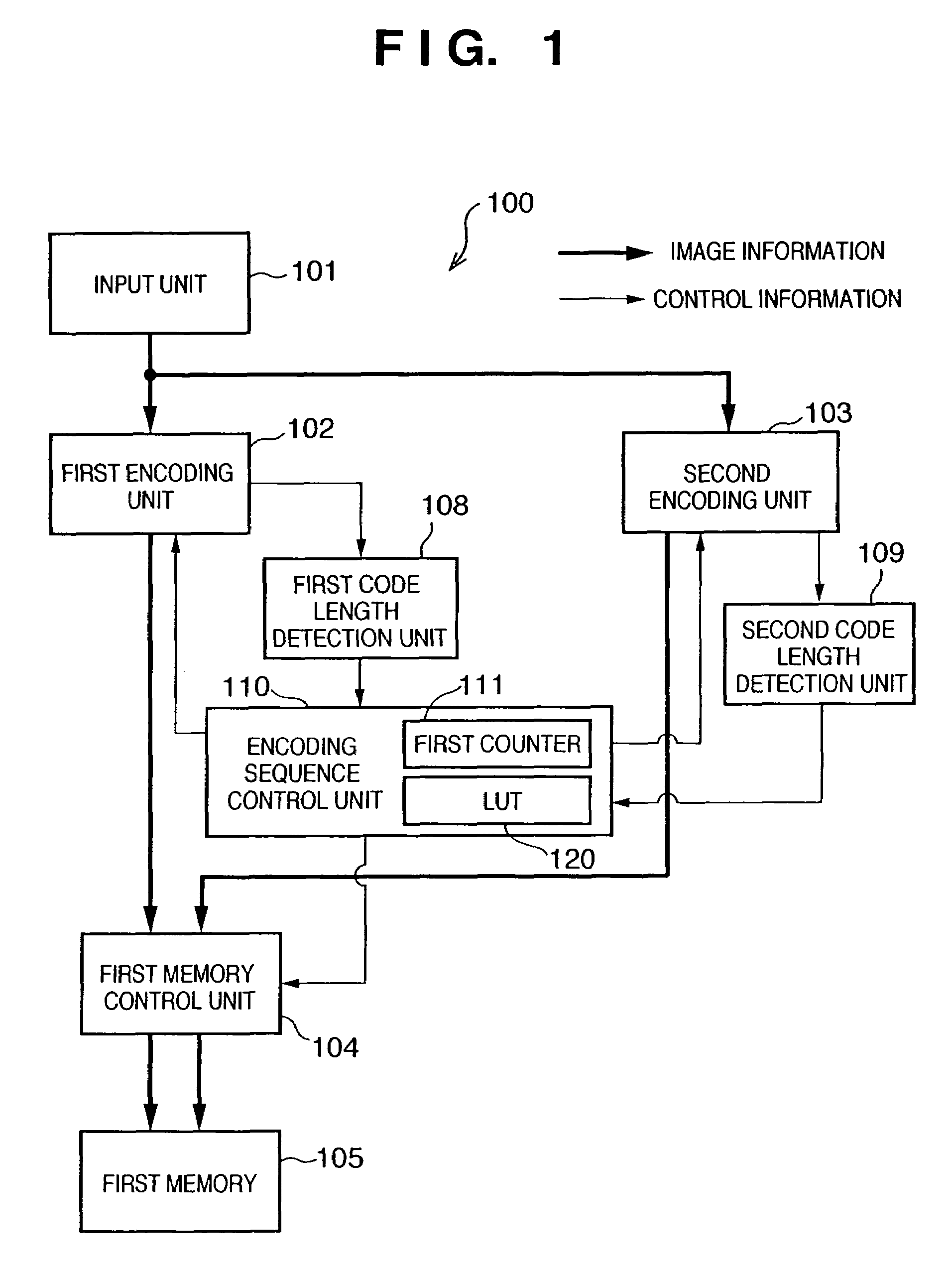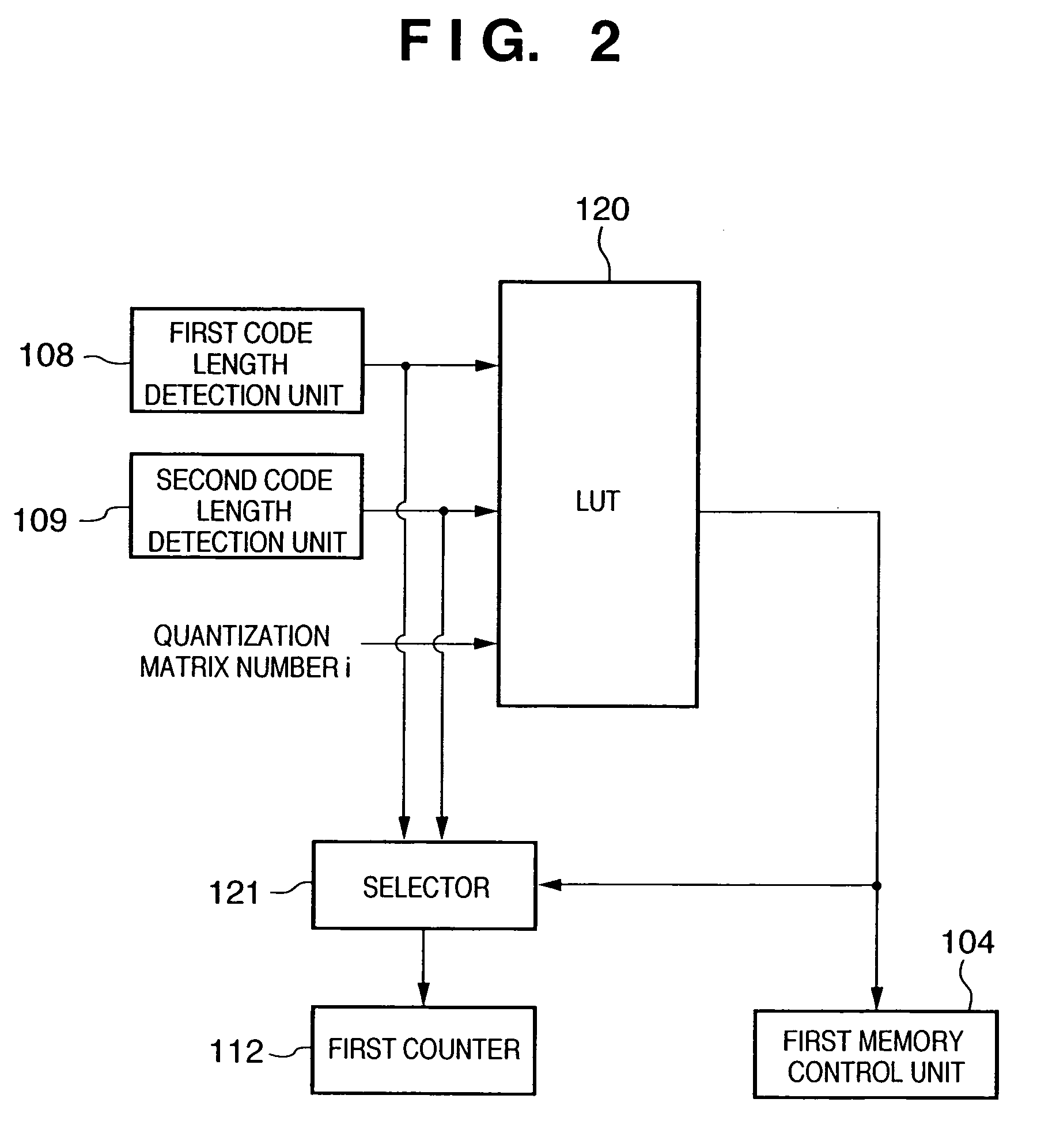Image encoding apparatus and method, computer program, and computer-readable storage medium
a technology of image data and encoding apparatus, applied in the field of image encoding, can solve the problems of overflow of memory, inability to ignore the influence of character/line image, etc., and achieve the effect of high image quality
- Summary
- Abstract
- Description
- Claims
- Application Information
AI Technical Summary
Benefits of technology
Problems solved by technology
Method used
Image
Examples
second embodiment
Description of Second Embodiment
[0106]In the above embodiment (first embodiment), when a generated encoded data amount exceeds a target data amount during encoding of one page, image data is input again.
[0107]The second embodiment will describe an example in which encoded data of a target data amount or less is generated without inputting a 1-page image again.
[0108]The arrangement of an apparatus is the same as that in FIG. 22, and the second embodiment will be explained by giving attention to an encoding unit 6.
[0109]FIG. 4 is a block diagram showing the encoding unit 6 according to the second embodiment. The encoding unit 6 is different from that in FIG. 1 in that a second memory control unit 106, second memory 107, re-encoding unit 112, and second counter 113 are added. The remaining arrangement is the same as that in FIG. 1, and the same reference numerals denote the same parts.
[0110]A first memory 105 stores encoded data which is selected in accordance with the same determinati...
first modification to second embodiment
[0169]FIG. 14 shows a modification of the arrangement in FIG. 4. The arrangement in FIG. 14 is different from that in FIG. 4 in that the storage destination of data re-encoded by the re-encoding unit 112 is changed to the first memory 105. The remaining arrangement is the same as that in FIG. 4.
[0170]FIG. 15 shows a state in which the total encoded data amount in the first memory 105 exceeds a target data amount, data in the first memory 105 is discarded, and re-encoding of encoded data (area I′ in FIG. 15) stored in the second memory 107 starts.
[0171]As shown in FIG. 15, the first memory 105 is set as the storage destination of re-encoding by the re-encoding unit 112, and re-encoding starts.
[0172]FIG. 16 shows the storage state of encoded data in two memories upon the completion of re-encoding. Upon the completion of re-encoding, as shown in FIG. 16, the first memory 105 stores encoded data represented in the area I. Encoded data in the area I corresponds to encoded data obtained w...
second modification to second embodiment
[0177]In the second embodiment and first modification, when the encoded data amount in the first memory 105 exceeds a target data amount, encoded data in the second memory 107 is re-encoded by the re-encoding unit 112. In other words, the re-encoding unit 112 does not execute re-encoding while the encoded data amount in the first memory 105 falls within the target data amount.
[0178]An example of effectively using this period will be explained as the second modification.
[0179]The following description is directed to a process while losslessly encoded data from the second encoding unit 103 is stored in the second memory 107 when the encoded data amount in the first memory 105 falls within the target data amount, under the condition that the quantization matrix table set for the first encoding unit 102 is Qi.
[0180]Similar to the second embodiment, losslessly encoded data from the second encoding unit 103 is stored in the second memory 107. However, the re-encoding unit 112 moves up a p...
PUM
 Login to View More
Login to View More Abstract
Description
Claims
Application Information
 Login to View More
Login to View More - R&D
- Intellectual Property
- Life Sciences
- Materials
- Tech Scout
- Unparalleled Data Quality
- Higher Quality Content
- 60% Fewer Hallucinations
Browse by: Latest US Patents, China's latest patents, Technical Efficacy Thesaurus, Application Domain, Technology Topic, Popular Technical Reports.
© 2025 PatSnap. All rights reserved.Legal|Privacy policy|Modern Slavery Act Transparency Statement|Sitemap|About US| Contact US: help@patsnap.com



